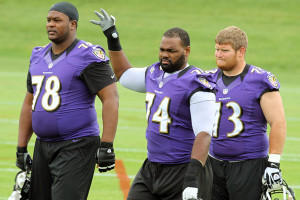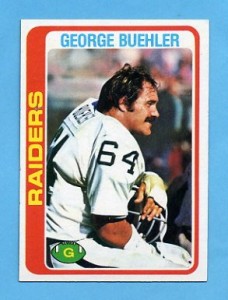The 2020 Atlanta Falcons starting offensive linemen were all former first round picks. Atlanta drafted right guard Chris Lindstrom and right tackle Kaleb McGary in the first round of the 2019 Draft, five years after using the 6th overall pick on Texas A&M left tackle Jake Matthews. In 2016, Atlanta signed center Alex Mack, the 21st pick in the 2009 Draft, away from the Browns to a monster deal; he’s been the center of the team’s offensive line ever since. And in the 2019 offseason, the left guard spot was pugged by James Carpenter, who had been a first round pick out of Alabama and then played four seasons each with the Seahawks and Jets.
It should go without saying that that is a lot of highly drafted offensive linemen for one team, even if Atlanta only drafted three of the players. [1]The Falcons also had five first round picks on offense outside of the offensive line: the Falcons drafted QB Matt Ryan, WR Julio Jones, and WR Calvin Ridley in the first round, too, and added former … Continue reading Let’s compare them to the Green Bay Packers, who had arguably the best offensive line in the NFL and trotted out the following starting five:
- LT David Bakhtiari (4th round pick by the Packers in 2013)
- LG Elgton Jenkins (2nd round pick by the Packers in 2019)
- C Corey Linsley (5th round pick by the Packers in 2014)
- RG Lucas Patrick (undrafted free agent out of Duke signed by the Packers in 2017)
- RT Billy Turner (3rd round pick by the 2014 Dolphins, signed by Green Bay in the 2019 offseason)
The Packers had one of the least heralded group of offensive linemen in the league — at least from a draft perspective (in other news, the entire left side of the line made the Pro Bowl). How does that compare to the rest of the NFL? [continue reading…]
References
| ↑1 | The Falcons also had five first round picks on offense outside of the offensive line: the Falcons drafted QB Matt Ryan, WR Julio Jones, and WR Calvin Ridley in the first round, too, and added former first round picks at RB (Todd Gurley) and TE (Hayden Hurst) in the 2020 offseason. Slot receiver Russell Gage, a sixth round pick out of LSU, was the 11th starter, and presumably teased mercilessly in the huddle. |
|---|



